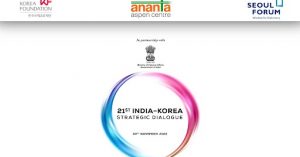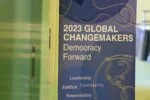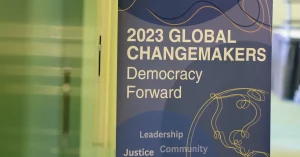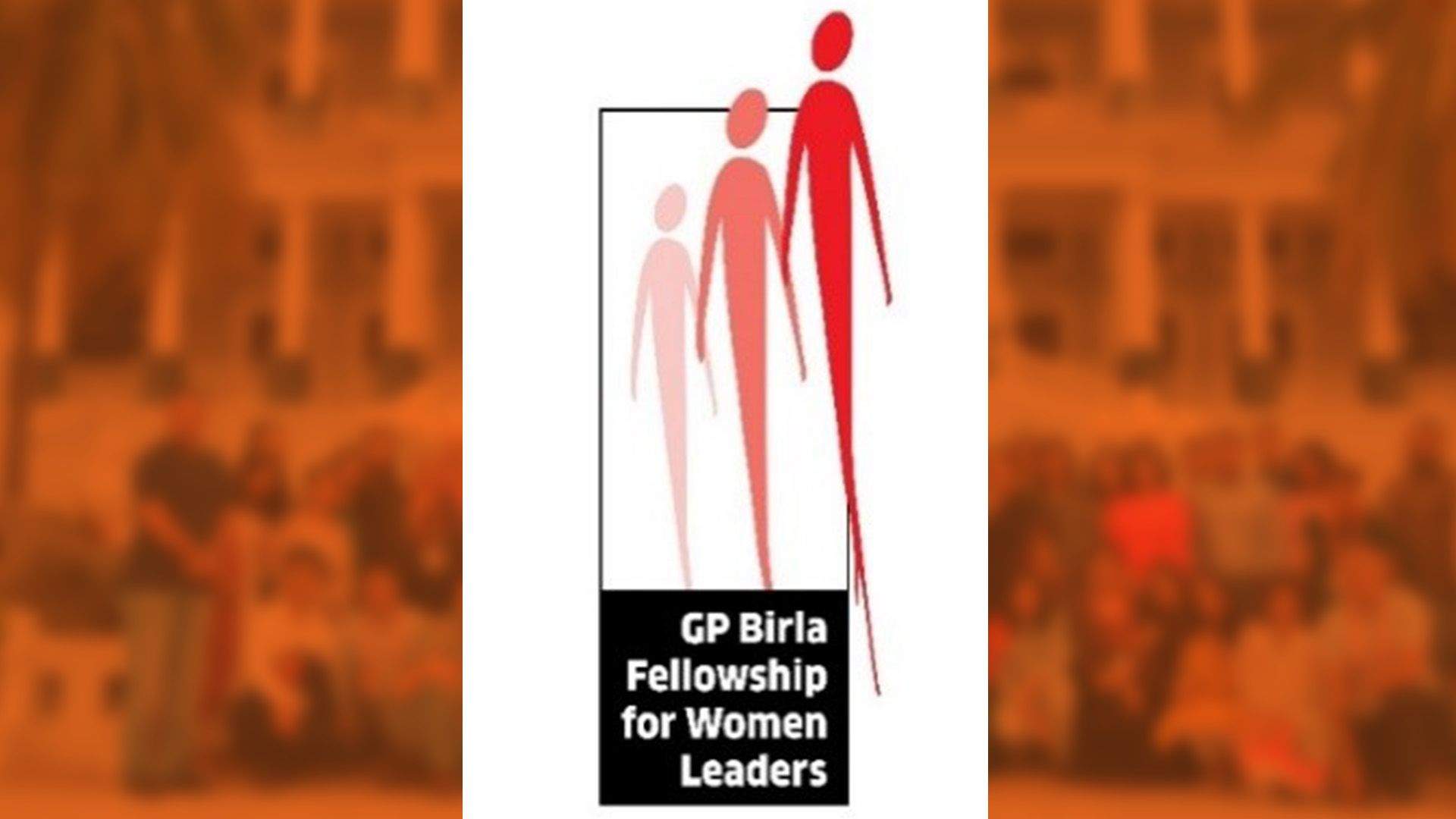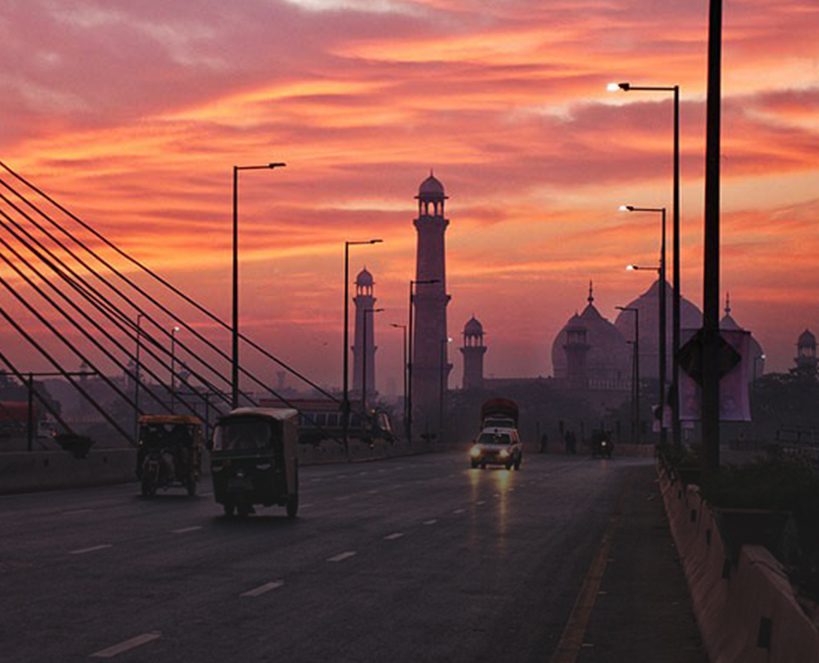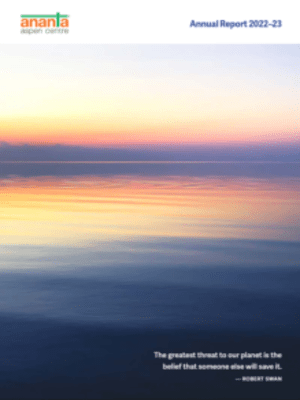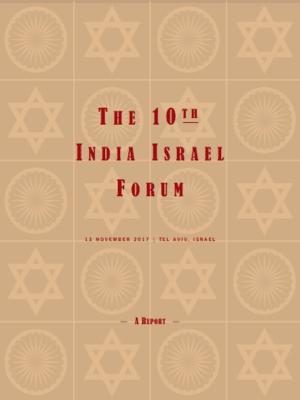SPECIAL ISSUE
RUSSIA-UKRAINE: WHERE TO NOW?
Ukraine vs Russia becomes NATO vs Russia
In early-April, there was a dramatic shift in the US/NATO approach to the Russia-Ukraine war. US and European statements defined new, maximalist goals for its endgame.
President Biden’s remark in end-March that “Putin cannot remain in power” had been quickly ‘clarified’ by his aides as an off-the-cuff remark, but a few weeks later, Secretary of State Blinken made the considered assertion that “a sovereign, independent Ukraine will be around a lot longer than Vladimir Putin is on the scene … our support for Ukraine … will continue until we see final success (emphasis added)”. Alongside him, US Defence Secretary Austin declared that Russia should be “weakened” to the degree that it cannot do things like invading Ukraine. US House Speaker Nancy Pelosi declared in Kyiv that the United States would support Ukraine “until victory is won”. Ukraine’s principal European supporter, the United Kingdom, did not hang behind: Foreign Secretary Liz Truss said NATO allies should help Ukraine with heavy weaponry supplies, to “push Russia out of the whole of Ukraine”, which means out of Crimea and Donbass. European Commission President Ursula Von der Leyen expressed similar sentiments in a number of NATO and EU forums.
Until early April, the Western approach was to arm Ukraine for effective defence against the invader, unleash devastating sanctions on Russia – to isolate it internationally, disrupt its economy and hinder its technological progress – and to reinforce military capabilities on Russia’s periphery to deter a Russian attack on a NATO country.
Meanwhile, there were efforts to move Russia and Ukraine towards a negotiated settlement. The Prime Minister of Israel made multiple mediation efforts, as also the Presidents of France and Turkey. Eventually Turkey catalysed a dialogue that reached a tentative conclusion in Istanbul on March 29. According to Russian FM Lavrov, Ukrainian negotiators initialled a document providing for a “neutral, non-aligned (sic) and non-nuclear state”, guaranteed by all stakeholders (essentially NATO and Russia), in which foreign countries would not deploy weapons or conduct military exercises, without the concurrence of all guarantor states. FM Lavrov further claimed that the Ukrainians had left Crimea and Donbas out of the purview of these security guarantees, implying that Ukraine may agree to a separate, special status for them. Ukrainian Foreign Minister Kuleba did not confirm the content of the agreement, though he indicated that progress was made. There was no indication of US support for this process, but it was assumed that the Ukrainians would not have moved without a nod from its principal patron.
There was a sea-change in the scenario, after the Ukrainian discovery of corpses of brutally killed, unarmed civilians in Bucha, near Kyiv, which Russian troops had vacated in end-March/early April. Ukraine alleged that Russian soldiers had carried out this carnage. This revelation triggered a crescendo of international condemnation. International outrage was fuelled by well-publicized visits to the site by a stream of foreign dignitaries. Moves to isolate Russia acquired an irresistible momentum, leading to a UN General Assembly resolution to expel Russia from the UN Human Rights Council. Russia denied responsibility for the killings and claimed that it was a deliberately staged “provocation”. Its diplomatic representatives in New York and elsewhere tried to present video and satellite evidence that the scene of the atrocities had been clear for a couple of days after the Russian withdrawal, and that the graves and bodies had materialized only thereafter. They made no headway in convincing the “international community”.
The Bucha revelations marked a watershed. Military assistance to Ukraine was ratcheted up, the rhetoric grew progressively harsher and the dialogue process was effectively dead in the water. This abrupt setback yet again highlighted a recurring reality of the troubled post-Cold War Russia-West engagement: whenever there is a sign of a thaw, something happens – by accident, coincidence or design – to reverse it. It reflects the number and complexity of the variables that determine the texture of this engagement.
Pledges of military, intelligence and economic assistance to Ukraine have been led by a massive US aid package of US $40 billion, which built on earlier packages totalling about $14 billion since February 24. The military component included artillery, armoured vehicles, air defence systems and sophisticated unmanned aerial, land and sea combat and surveillance systems. Considerable weaponry, training and intelligence support have been extended by UK, Canada, Poland and other European countries, and more has been pledged. Intense peer pressure has forged an unprecedented European unity, that has jolted even Germany out of its traditionally cautious (and Constitutionally mandated) posture on arms transfers, pushing it to pledge more and more heavy weapons for Ukraine. Germany has had to meekly absorb barbs from Ukrainian diplomats and the snub of its President being told he was not welcome in Ukraine, because of his (and his Party’s) alleged Russian connections. The fiercely pro-Ukraine sentiments generated by the Russian aggression, reinforced by strong NATO (US) support, has emboldened Europe’s poorest country to publicly lecture the continent’s economic powerhouse on its obligation to help, reminding it that Ukraine is not merely defending itself, but the entire free world.
The US assistance to Ukraine included real-time intelligence support, tracking the movement and actions of Russian forces. The US media has been carrying leaked information on this: intelligence leading to the sinking of the flagship of Russia’s Black Sea fleet, killing of Russian generals on the battlefield, and halting Russian advances in strategic locations.
This strategic shift in NATO’s approach dismissed diplomacy. European and Israeli efforts to keep dialogue open with President Putin ceased: while President Macron talked to his Russian counterpart nine times (including a visit to Moscow and two joint calls together with the German Chancellor) between February 24 and April 2, there were no calls thereafter until the first week of May. Contacts of the German Chancellor and the Israeli Prime Minister similarly dried up. As for the Russia-Ukraine dialogue, it was pursued online for a while, but the pretence was soon given up. According to FM Lavrov, Ukraine reverted on April 6 with a fresh draft, going back on the special status for Crimea and Donbass and changing the provisions on Ukrainian neutrality drastically.
The clear message from NATO, therefore, is that Ukraine should win this war and Russia should be handed a “strategic defeat”, permanently weakened and pushed back to pre-2014 borders. Destabilizing President Putin or engineering his overthrow is explicitly stated in some quarters. Trying Russia for war crimes and confiscating Russian assets abroad (as reparation) have been mentioned. A bill is pending in the US Congress to authorize attachment of Russian assets.
The Russian war machine staggers forward
After well over two months of a strangely lethargic campaign, absorbing heavy loss of life and materiel, frequently changing direction and strategy, being effectively countered by nimble-footed (and intelligence-enabled) Ukrainian fighters, and decisively losing the information and perception battle to Ukraine, Russia finally claimed a significant victory by taking full control of the Ukrainian port city of Mariupol, which had been surrounded for over two months. The last of the Azov regiment fighters surrendered to the Russians, who have reportedly captured over 1700 prisoners of war. The city is critical to securing a land bridge to Crimea from Russia, through the rebel-controlled territory, and securing the Sea of Azov. It is also an important port, handling the bulk of Ukraine’s exports of steel and grain. The Russians already enjoy naval dominance in the Black Sea, thereby enforcing an embargo on Ukraine’s maritime trade and making Ukraine a land-locked country, for the present.
After the capture of Mariupol, Russian troops are moving, with concentrated artillery and air power, to annex the rest of the Donetsk and Luhansk regions of eastern Ukraine. According to western reports, Russian troops now hold 95% of the Luhansk region (the northern of the Luhansk and Donetsk regions, that constitute the Donbas), with artillery covering the access roads to the region, making withdrawal or reinforcements of Ukrainian troops risky.
India holds the line
Through March and April, a procession of foreign dignitaries came streaming into India, hoping to use the strength of India’s bilateral relationship with their countries to extract a condemnation of Russia’s war on Ukraine. The arguments were familiar, though there were nuances of approach.
India’s official representatives have largely stuck to the position articulated in the Security Council and other UN forums. External Affairs Minister Jaishankar pushed back against some of the more patronizing remarks, saying India’s policymakers do see what’s happening in the world, have a “decent sense of India’s interest”, and know how to protect and advance it. To the frequent query how India can expect support for a rules-based order in Asia, when it is not standing up for a rules-based order in Europe, he has pointed out that Asia has, in fact, faced many threats to the rules-based order – and Europe has not taken much notice of it.
In his bilateral interaction with US President Biden at the India-US 2+2, Prime Minister Modi did not respond to his interlocutor’s reference to Russia’s “horrific assault”. He described the situation in Ukraine as “very worrying” and said he had urged the Presidents of Russia and Ukraine to engage in direct talks for peace. On the Bucha killings, he said there should be an impartial enquiry – an obvious call, but one which has not been made by any western leader. In his press availability with the German Chancellor, PM Modi seemed to be referencing NATO’s new posture, when he called for a negotiated settlement, saying there can be no victors in this war. In his opening statements with Quad leaders at the recent Tokyo summit, he did not mention Ukraine at all.
The totality of India’s statements and actions could be summarized in three basic points: one, India may not like Russia’s action in Ukraine, which is clearly a violation of international law, but will not be pressured into a public condemnation, just to please its other partners; two, India’s actions reflect its geopolitical interests that flow from its history and geography, which are distinct from those reflected in the Ukraine war; three, India’s position is not one of passive neutrality; it is protecting and furthering interests – and these interests do not conflict with India’s shared strategic interests with other partners.
India’s western partners seem to have eventually absorbed this message, as was evident in the atmosphere and outcomes of the India-US 2+2, Quad Summit, G7 outreach and high-level bilateral meetings in Berlin, Paris and Copenhagen.
At her press conference following the G7 Foreign Ministers’ meeting, the German Foreign Minister acknowledged that Europe still needed to convince the rest of the world that the Ukraine war was not only a European concern. She said extra-regional countries have asked her where Europe was, when they were facing violations of international law.
In its report on global responses to Russia’s invasion, The Economist carries the results of a YouGov poll on public Indian attitudes to the war. The poll showed that 40% of those polled approved of President Putin’s decision to go to war, while 60% disapproved. In popularity of the two leaders, President Zelenskyy scored 63%, while President Putin got 54%.
Cancelling Russia!
Western sanctions against Russia are professedly aimed at isolating Russia internationally, devastating its economy and degrading its technological base. But ostracizing Russian cultural groups, sports teams and professionals does not fit this purpose. The Bolshoi ballet theatre or a Russian entry to the Eurovision song contest has no connection with the Kremlin. Excluding Russian individuals abroad – artistes, athletes and other professionals – from their professional engagements does not make sense. Some are being asked to publicly declare that they oppose the war, though those who demand this of them know it might get them into trouble back home. It is now uniform practice that organizations do not show the either the flag or the nationality against the names of Russian individuals or groups. This amounts to a negation of a nation, not of its government’s actions. The organizers of the Wimbledon tennis tournament went even further – on a cue from the British government – by excluding Russian and Belarus players from this prestigious Grand Slam event. To the credit of the men’s and women’s players’ associations, they protested this illogical edict by stripping the tournament of ranking points.
A government’s unacceptable actions do not justify repudiation of an entire nation, its people, history and culture.
Where does the war go from here?
The question now, after the Russians have captured Mariupol and have made deep inroads into Donbas, is whether the Western alliance will continue to hold the hard line that was launched after Bucha. While Russia has suffered military losses, the war has also taken a toll on Ukrainian forces. Equipment may come streaming in; manpower cannot, beyond a point. The fighting in eastern Ukraine is intense, but the Russians are likely to eventually prevail, according to most western military experts. The levels of death and destruction are likely to rise. The massive injection of more sophisticated weaponry is provoking Russia to target military facilities and transport infrastructure in western Ukraine, in an effort to disrupt the new supplies. This is bringing Russian missile strikes perilously close to NATO’s border. The US Director of National Intelligence warned the Senate Armed Services Committee (May 10) that the conflict … could take “a more unpredictable and potentially escalatory trajectory”, including the possible use of nuclear arms.
Some voices in the US are now beginning to question the sustainability of its current strategy. The New York Times, which has been among the strongest supporters of “unstinting” NATO support for Ukraine, has put out a slightly altered perspective in recent opinion pieces, including one by its entire editorial board. One, by unconditionally supporting the war and shelving diplomacy, the US and its allies … are “taking a risk far out of step with any realistic strategic gain”. Second, an all-out war with Russia is “not in America’s best interest”, even if Ukraine has to make “the painful territorial decisions that any compromise will demand”. Third, popular support for a war in a far-off country cannot be indefinitely sustained: inflation, energy prices and food shortages are much bigger issues for US voters than Ukraine.
The NYT suggests that the US should not chase an “illusory win”, but seek a settlement that allows for a sovereign Ukraine and “some kind of relationship” between the US and Russia, giving up the “unrealistic” goals of pushing Russia back to pre-2014 borders, weakening Russia permanently, destabilizing Putin, having him removed or prosecuting him as a war criminal.
These are views of an influential section of US opinion-makers outside government. Some idea of what policy-makers are thinking could be gleaned from a telephone call that the US Defence Secretary Austin put in to the Russian Defence Minister and a further call, about a week later, from the Chairman Joint Chiefs of Staff, Mark Milley to his Russian counterpart. Both these conversations were said to have reinforced “deconfliction” protocols (presumably addressing the concerns voiced by the Director of National Intelligence). It was speculated that American (and other western) intelligence/special forces operatives may have been captured from the Azovstal catacombs, and their return may have been discussed. But what raised antennae was that the Pentagon said Austin had called for an immediate ceasefire. This appeared at odds with his aggressive public message three weeks earlier, about weakening Russia and degrading its capacities. The Pentagon did not elaborate on the Milley-Gerasimov call, but the US Forces Commander in Europe, who is also NATO’s Supreme Allied Commander Europe (SACEUR), said he hoped the conversation was “one step closer to a diplomatic solution in Ukraine”. More recently, Secretary of State Blinken discussed with Ukraine’s Foreign Minister how they could strengthen Ukraine’s hand “at any negotiating table that emerges in the future”.
It may be premature to read these as signals of a recalibration of the US/NATO position. There remain strong strands of opinion in policy-making circles, holding that the Russian strength is brittle, and one determined push (substantially increasing military support and weaponry to Ukraine) may break the Russian army’s back.
Military experts are unanimous, however, that to have a decent chance of pushing the Russians back from the Donbass, the Ukrainians need much more, and much more powerful, weaponry and they need it to be delivered quickly. The Americans have supplied about 100 M777 howitzers; Ukraine may need many hundreds. Ukraine has been asking for weaponry like Multiple Launch Rocket Systems (MLRS) and High Mobility Artillery Rocket Systems (HIMARS), but the Pentagon has apparently demurred, presumably because it would raise the intensity of the conflict, by enabling Ukraine to strike deeper into Russian territory.
According to European analysts (quoted by The Economist), a similar debate is playing out in Europe, with France, Germany and Italy in the camp that believes that a peace deal should be reached with Russia, without trying to humiliate it. President Macron has been saying publicly for quite some time now (from well before this war) that Russia has a place in the European security order. In the opposing camp are UK, Poland and the Baltic states, whose position is well-summarized in the quote of the Estonian Prime Minister (in The Economist): “it is much more dangerous giving in to Putin than provoking him”.
These considerations may influence the evolution of US/NATO’s future strategy. How Russian forces acquit themselves in the Donbas battles and how much, and what, weaponry the US and allies inject, are relevant.
But the US and Europe might also factor in the political and economic takeaways from this war so far, to assess the consequences for the European and global order of the various available choices.
The narrative of democracy against autocracy, as a means to mobilize support against Russia, proved to be problematic. As former National Security Advisor Shivshankar Menon points out in Foreign Affairs, many of the world’s biggest democracies do not see the war through this prism: they have not explicitly condemned the Russian invasion or joined the US-led economic sanctions. Most Latin American countries, including the democracies of Brazil and Mexico, have not joined the sanctions. A large part of Asia and Africa did not support UN resolutions condemning the invasion and did not join the sanctions. In effect, therefore, much of the world (apart from NATO and other US allies) view the conflict as a contestation over the European security order – not as an existential threat to the global order. This was even more graphically illustrated by the vote and statements of countries on the UNGA resolution for expelling Russia from the Human Rights Council. Many more countries (82) abstained or opposed the expulsion of Russia. These responses seem to indicate that, in the post-Cold War world, partnerships are based more on shared interests than on affinity of political systems.
This meant that Russia was not isolated from many international forums (despite its expulsion from the Human Rights Council) – BRICS and SCO meetings were held, and Indonesia resisted pressures and invited Russia to the G-20 Summit later this year. US allies Saudi Arabia and UAE made a public point of connecting with President Putin and coordinating the OPEC+ oil production targets with him.
The impact of economic sanctions has not been according to plan. The “nuclear options” of freezing Russia’s foreign exchange reserves and “de-SWIFTing” its major banks were meant to bring the Russian economy swiftly to its knees. The immediate impact was, indeed, dramatic, as the ruble crashed to about half its February 23 value against the dollar, and the Moscow stock exchange had to be hastily shut down. But, as western business media have been regularly reporting recently, the Russian economy soon shrugged off the sanctions, because of immediate interest rate action and capital controls by its Central Bank, as well as soaring revenues from continued export of oil and gas. Russia reported a current account surplus of about $96 billion from January to April 2022, compared to about $28 billion over the same period last year. Western markets now rate the ruble as the “most valuable” of emerging market currencies, at about 65 to the dollar, compared to about the pre-war 85. Russia continues to repay dues on foreign-currency bonds. Russians, said The Economist, are spending “fairly freely” in cafés, bars and restaurants once again. The key interest rate, which was abruptly hiked overnight from 9.5% to 20% after the sanctions, has been progressively lowered, and is now at 11%. The Economist says that predictions of a 15% Russian GDP decline this year are “starting to look pessimistic”.
There will still be a decline of 8 to 10% and inflation remains at alarming levels. Some economists say supply shortages, due to withdrawal of foreign suppliers, will start hitting the economy by the end of the year. But many countries are not imposing sanctions on Russia. Also, the experience from past sanctions shows that suppliers eventually find ways around them.
In any case, the punishment for Russia appears to have been deferred, while the rest of the world has got its punishment now, in soaring energy prices, commodity disruptions and food shortages. In that respect, the sanctions have not achieved the “smart” objective of hitting Russia and cushioning the impact on sanctions-imposing countries.
Energy has proved to be the Achilles heel of the sanctions. Russia’s dominant role as supplier of energy inputs to the western world – oil, gas, coal and uranium – made it nearly impossible to cut off foreign currency flows into Russia or to fully choke off its banks’ access to the outside world. According to EU statistics, EU countries depend on Russia for over 60% of their energy needs (gas, oil and coal). Though Germany, as the biggest economy, is the biggest importer, its dependence is at about the level of the EU average. Others (Hungary, Slovakia, Austria, Italy – to take a few examples) are proportionately more dependent on Russian energy. In the five packages of sanctions that the EU has imposed on Russia so far, coal is the only energy source that was eventually included. The sixth package of EU sanctions, including drastic cuts in seaborne and pipeline oil imports from Russia, has not found consensus among EU members, over three weeks after it was drawn up by the European Commission – which, of course, does not have an economy to manage or an electorate to please. The result was that Russia raked in revenues of over US$ 65 billion (The Economist) in the first quarter of 2022 – an 80% year-on-year growth!
The US did not stop uranium imports from Russia, because it would have increased electricity prices in US homes. The UK committed to end oil imports from Russia only by the end of 2022, and has not yet decided on cutting off gas imports.
Moving away from Russian energy has, therefore, proved difficult for many European countries. The vehemence with which other European countries advocate energy independence from Russia is inversely proportional to their dependence on Russian imports and directly proportional to their access to alternative sources, whose competitiveness will increase by cutting Russia off. This is the genesis of the narrative of Russian energy as a geopolitical tool. Ukraine’s objection to the Nordstream 2 (the undersea Russia-Germany gas pipeline) was threefold: by bypassing Ukraine, it deprived the latter of transit revenues; by reducing Ukraine’s importance as a transit country, it threatened undermining European commitment to Ukraine’s cause vis a vis Russia; and it would make investment to exploit Ukraine’s gas resources less commercially attractive. The US interests in Ukraine’s gas reserves developed since 2014. US interest in increasing LNG exports to Europe were also best served by restricting Russian gas supplies, which are much cheaper. The Central European countries, which are developing LNG terminals on the Three Seas (Black, Baltic and Adriatic) could become Europe’s major energy hub, if the competition from Russian gas is choked off.
Meanwhile, even as the European Commission was making brave statements about banning Russian oil, the US Treasury Secretary warned against a full European ban. American consumers were already seeing increasing gasoline prices at the pump, and analysts warned that a European ban on Russian oil imports would drive crude prices to over $185 per barrel. Even without a total European ban, oil prices continue to rise and, when Chinese demand returns, could settle at US$120-130 per barrel. What these facts suggest is that a buyer-seller relationship of intense mutual dependence has no real value as a geopolitical tool.
The European Commission has said the Union will have to invest up to €300 billion by 2030 to become independent of Russian energy imports. However, energy experts believe this figure grossly underestimates the cost and the timeframe required to achieve this goal. It involves building huge capacities for LNG processing, wind, solar and nuclear power. Even to cut its gas dependency by two-thirds this year, as per its commitment, the EU needs to instal 290 gigawatts of wind and 250 gigawatts of solar power capacity. They will require enormous quantities of steel and aluminium, besides other materials. These projects have to run concurrently, if the EU is to get anywhere near its target within the defined timeframe. This means spikes in commodity prices and supply constraints. And, since Russia is among the world’s top steel and aluminium exporters, it may again mean windfall profits for Russia from the effort to stop its energy exports to Europe!
The Russian energy dilemma will stalk Europe even after the war (whenever and however it ends). In an accelerated effort to wean itself away from Russian fossil fuels, it has to fast track its programmes for alternative energy sources – at higher cost and accepting interim shortfalls. Moreover, the pain will be differentially distributed – the more the volume of cheap Russian gas that a country buys today, the higher the increase in its energy costs from alternative sources, and therefore the greater the drag on its economic growth. This is precisely why countries have clung on to Russian supplies. It remains to be seen if political leaders will remain committed to this economic sacrifice, after the emotions generated by the war start waning.
There are broader challenges in prospect. The reconstruction of Ukraine and rehabilitation of its displaced population will be a multi-year, multi-billion dollar project, for which resources have to be found, alongside those for re-orienting from Russian energy, humanitarian disasters in Afghanistan and other countries, and climate change mitigation. About 7 million Ukrainians have been displaced, according to a number of estimates. Countries like Poland and Hungary have borne the brunt of immigration – they have taken in numbers exceeding 5% of their national populations. There are bound to be economic and societal consequences. These are problems, whose costs are mounting with every day of the war.
The outcome of the war would influence a reconfiguration of economic and political forces in Europe. Even as a re-consolidation (and expansion) of NATO is being celebrated, both France and Germany have reiterated the goal of strategic autonomy for Europe, with the political and military space for it to pursue its interests, within and outside Europe. It recalls the European initiatives of the Lisbon Agenda and the Common Security and Defence Policy of the early 2000’s; the original ambitions of both were rapidly grounded. The Europe of today is more diverse and more fractious – the search for a focussed strategic compass may be even more problematic. Allied to this is the future of NATO itself. Paradoxical as it may sound at this triumphal moment of NATO unity, it may need to examine its role and actions in the current conflict, its decision-making processes and the practical (rather than the declaratory) meaning of Article V (collective self-defence), to decide whether this is an appropriate politico-military model for the post-Cold War world.
There is another variable that may go into decision-making on the war, at various levels. Almost every day, there are new “revelations” about the state of President Putin’s health and his estimated longevity in office (and in the world). Most of them quote faceless intelligence sources, though a couple of known intelligence faces have recently surfaced (like the former head of the British MI6). It is difficult to totally dismiss such reports. Equally, given the near-impenetrable wall of secrecy behind which the Kremlin operates, reliable intelligence is difficult to get. It is not uncommon for half-baked, rumour-based intelligence to become inputs into policy-making. Decision-makers are often happy to believe intelligence that matches their predilections.
US and European leaders routinely reiterate that territorial adjustments and status are sovereign decisions for Ukraine to make. This gets an A* for political correctness. But realities of geopolitics mean that a country almost entirely dependent on external support for its defence and economic survival has to accommodate the interests of the partners who have sponsored its political journey for two decades. In a piercing analysis of the competing geopolitical rivalries over Ukraine, the Dutch scholar Chris Kaspar de Ploeg wrote (Ukraine in the Crossfire, Clarity Press, 2017) that the fate of the country would be largely decided in the back rooms of Moscow, Washington and Berlin, rather than on the streets of Kiev and Donetsk. This assessment is not too fanciful; in today’s situation, one should add Warsaw, Paris and London to the mix. The real purpose of this war is to establish the relative weightage of the interests of these stakeholders in Ukraine’s future.
*******
The previous issues of Russia Review are available here: LINK
…………………………………………………………………………………………………………………
(The views expressed are personal)
The Author can be reached at raghavan.ps@gmail.com
…………………………………………………………………………………………………………………






